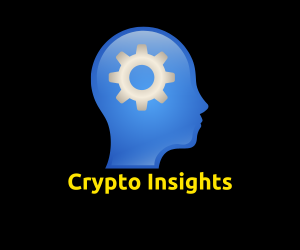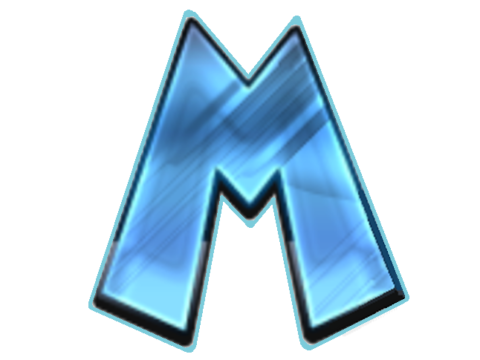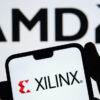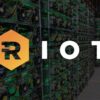
Solana has emerged as one of the most talked-about blockchain platforms in recent years, thanks to its impressive performance metrics, low transaction fees, and innovative technology. From its rapid rise in the cryptocurrency market to its expanding ecosystem of decentralized applications (dApps) and decentralized finance (DeFi) projects, Solana’s growth and adoption are noteworthy. In this article, we’ll provide a comprehensive market analysis of Solana’s growth trajectory, factors driving its adoption, and its impact on the blockchain ecosystem.
Solana’s Rise in the Cryptocurrency Market
Since its launch in 2020, Solana has made significant strides in the cryptocurrency market. The platform’s native token, SOL, has seen substantial price appreciation, reflecting growing investor confidence and increasing interest in the Solana ecosystem.
1. Market Capitalization and Token Performance
Solana’s market capitalization has surged, positioning it among the top cryptocurrencies by market cap. The value of SOL has experienced notable volatility, driven by factors such as market sentiment, technological advancements, and overall demand for blockchain solutions. Despite the fluctuations, Solana’s long-term performance has been largely positive, signaling strong market confidence.
2. Increased Trading Volume
The trading volume of SOL has consistently increased, indicating heightened interest from both retail and institutional investors. High trading volumes often correlate with greater liquidity and market engagement, further solidifying Solana’s position as a major player in the crypto space.
Factors Driving Solana’s Adoption
Several key factors have contributed to Solana’s rapid adoption and growing popularity among developers, investors, and users. These factors include:
1. High Transaction Throughput
Solana’s ability to process up to 65,000 transactions per second (TPS) sets it apart from other blockchain platforms. This high throughput is essential for supporting large-scale decentralized applications (dApps) and financial transactions. Solana’s performance metrics make it an attractive option for projects requiring fast and efficient transaction processing.
2. Low Transaction Fees
One of Solana’s most significant advantages is its extremely low transaction fees. Unlike Ethereum, which can experience high gas fees during periods of network congestion, Solana’s fees are typically less than $0.01 per transaction. This cost-effectiveness is appealing to both developers and users, making Solana a popular choice for various applications.
3. Innovative Consensus Mechanism
Solana’s consensus mechanism, which combines Proof of History (PoH) and Proof of Stake (PoS), enhances its scalability and efficiency. The PoH protocol provides a verifiable and continuous time-stamping of transactions, while PoS ensures network security and fairness. This innovative approach contributes to Solana’s high performance and reliability.
4. Growing Ecosystem
The expansion of Solana’s ecosystem is a key driver of its adoption. The platform has attracted a diverse range of projects, including decentralized finance (DeFi) platforms, non-fungible tokens (NFTs), and gaming applications. Notable projects like Raydium, Serum, and Metaplex have helped to build a robust and vibrant ecosystem on Solana.
5. Institutional Interest
Institutional investors have shown increasing interest in Solana, contributing to its growth. Investments from venture capital firms and partnerships with major players in the fintech and crypto industries underscore the platform’s potential and credibility. Institutional involvement often signals confidence in the long-term viability of a blockchain project.
Key Areas of Growth and Adoption
Solana’s growth and adoption can be observed across several key areas:
1. Decentralized Finance (DeFi)
The DeFi sector on Solana has experienced rapid growth, with several innovative platforms and protocols launching on the network. Raydium, Serum, and Solend are prominent examples of DeFi projects that leverage Solana’s high throughput and low fees to offer decentralized trading, lending, and yield farming services. The growth of DeFi on Solana reflects the increasing demand for efficient and scalable financial solutions.
2. Non-Fungible Tokens (NFTs)
Solana has become a significant player in the NFT space, attracting artists, collectors, and creators who seek an alternative to Ethereum. Platforms like SolSea, Magic Eden, and Metaplex facilitate the creation, buying, and selling of NFTs on the Solana blockchain. The success of Solana-based NFT projects demonstrates the platform’s ability to support diverse digital assets and creative projects.
3. Gaming
Gaming is another area where Solana is making an impact. Games like Star Atlas and Aurory are utilizing Solana’s fast and cost-effective blockchain to create immersive and engaging experiences for players. The integration of NFTs and in-game assets on Solana enhances the gaming experience and offers players new ways to interact with digital worlds.
4. Enterprise and Institutional Use
Solana’s scalability and performance make it an attractive option for enterprise and institutional use cases. The platform’s ability to handle high transaction volumes and provide low-cost transactions positions it well for applications in areas such as supply chain management, digital identity, and cross-border payments.
Challenges and Considerations
Despite its impressive growth, Solana faces several challenges that could impact its future adoption:
1. Network Stability
Solana has experienced network outages and performance issues in the past. Ensuring network stability and reliability is crucial for maintaining user trust and supporting long-term adoption. The development team continues to address these challenges, but consistent performance is essential for sustaining growth.
2. Competitive Landscape
Solana operates in a highly competitive environment with other blockchain platforms like Ethereum, Binance Smart Chain (BSC), and Polkadot. Staying ahead in terms of technology, adoption, and ecosystem development will be key to Solana’s continued success.
3. Regulatory Concerns
As the cryptocurrency and blockchain space evolves, regulatory scrutiny is increasing. Solana must navigate regulatory challenges and ensure compliance with evolving laws and regulations to avoid potential legal issues.
Conclusion
Solana’s growth and adoption reflect its strong performance, innovative technology, and expanding ecosystem. With its high transaction throughput, low fees, and unique consensus mechanism, Solana has positioned itself as a leading blockchain platform for decentralized applications, DeFi, NFTs, and more. The increasing interest from institutional investors and the vibrant development community further underscore the platform’s potential.
As Solana continues to evolve and address challenges, its role in the blockchain ecosystem is likely to grow, offering new opportunities for developers, investors, and users. Monitoring Solana’s progress and staying informed about its developments will be crucial for understanding the future of this dynamic and rapidly growing blockchain platform.










